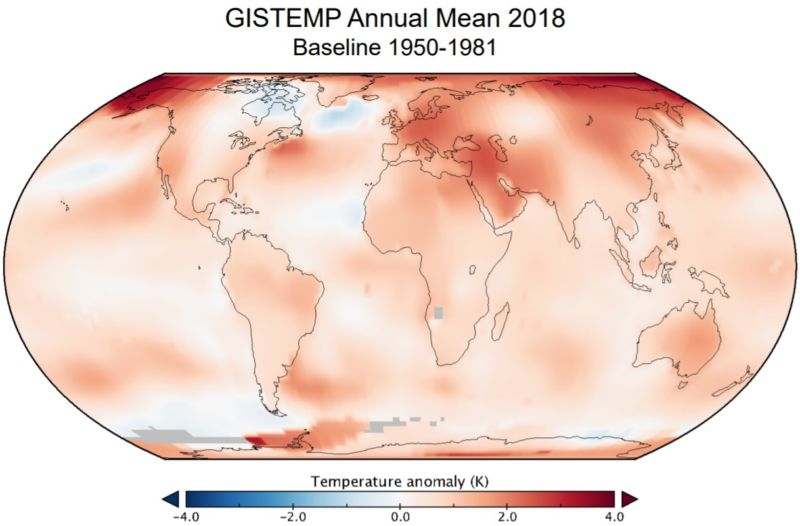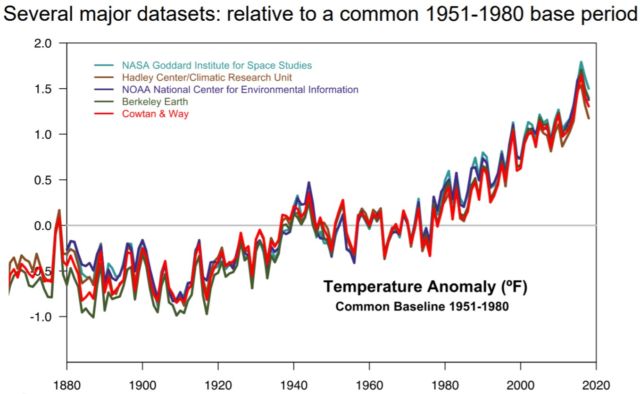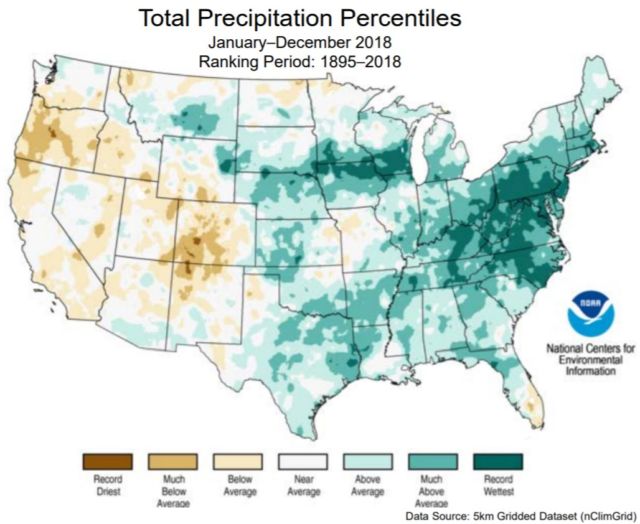
It’s that time of year again… or at least it was. NASA and NOAA normally release the final global temperature data for the previous year around January 18, but the government shutdown delayed that release. It finally happened on Wednesday, with both agencies finding that 2018 ranks at number four on the ever-changing list of the warmest years on record.
That matches the ranking from the independent Berkeley Earth dataset, which they released on January 24 by accessing raw US data during the shutdown. The UK Met Office also released its data today, ranking 2018 similarly.
So why 4th place? Last year settles in just behind 2016, 2017, and 2015 as part of a continuing and human-caused global warming trend toward record temperatures—that's the reason the top years are all quite recent. Whether a year wiggles into 5th or 1st depends primarily on short-term natural variability that's layered on top of the human-driven trend.
Variability
For example, 2016 was lifted to a strong record by potent El Niño conditions in the Pacific Ocean. This sloshing of surface water in the equatorial Pacific can either expose a swath of cooler deep water (La Niña) or stretch a lid of warmer water clear across the ocean (El Niño). Last year started with a weak La Niña and ended in a weak in-between state. That helped keep 2018 a touch below the record.
NASA’s dataset shows 2018 at 0.83°C (1.49°F) above the 1951-1980 average (used as a common comparison point), with NOAA and Berkeley Earth a few hundredths of a degree below that. For a longer-term perspective, Berkeley Earth calculates the warming since the late 1800s to be 1.16°C (2.09°F).

Looking around the world, Europe and the Middle East experienced record warmth, and the Arctic continues to stand out for its especially rapid warming trend.
Warmth and weather
For the US, NOAA’s data shows that 2018 was the country’s 14th warmest year, partly due to a cooler year across the Plains States. It was also the 3rd wettest year for the US despite intense droughts experienced across much of the West. That was apparently more than made up for by precipitation in the eastern half of the country—especially Appalachia.

NOAA also tracks the number of “billion dollar” weather disasters in the US, and 2018 saw 14 of them, with total direct losses adding up to about $91 billion. Both of those numbers are the 4th largest since this tracking began in 1980. (Inflation is accounted for.) Hurricane Michael accounted for about $25 billion on its own, with Hurricane Florence and wildfires in the West chipping in $24 billion apiece.
Looking ahead to 2019, forecasts of a weak El Niño lead to some confidence that 2019 will end up warmer than 2018. Both Berkeley Earth and the UK Met Office have released a best-estimate prediction that 2019 will be the 2nd warmest year on record. If you’re wondering whether such predictions have any skill, take a look back at our story from last year:
https://arstechnica.com/science/2019/02/2018-ranks-as-fourth-warmest-year-for-globe/The UK Met Office global temperature forecast expects La Niña to do enough that 2018's average temperature is likely to be about the same and end up the fourth warmest year—behind 2015, 2016, and 2017.
Bagikan Berita Ini














0 Response to "2018 ranks as fourth-warmest year for globe - Ars Technica"
Post a Comment